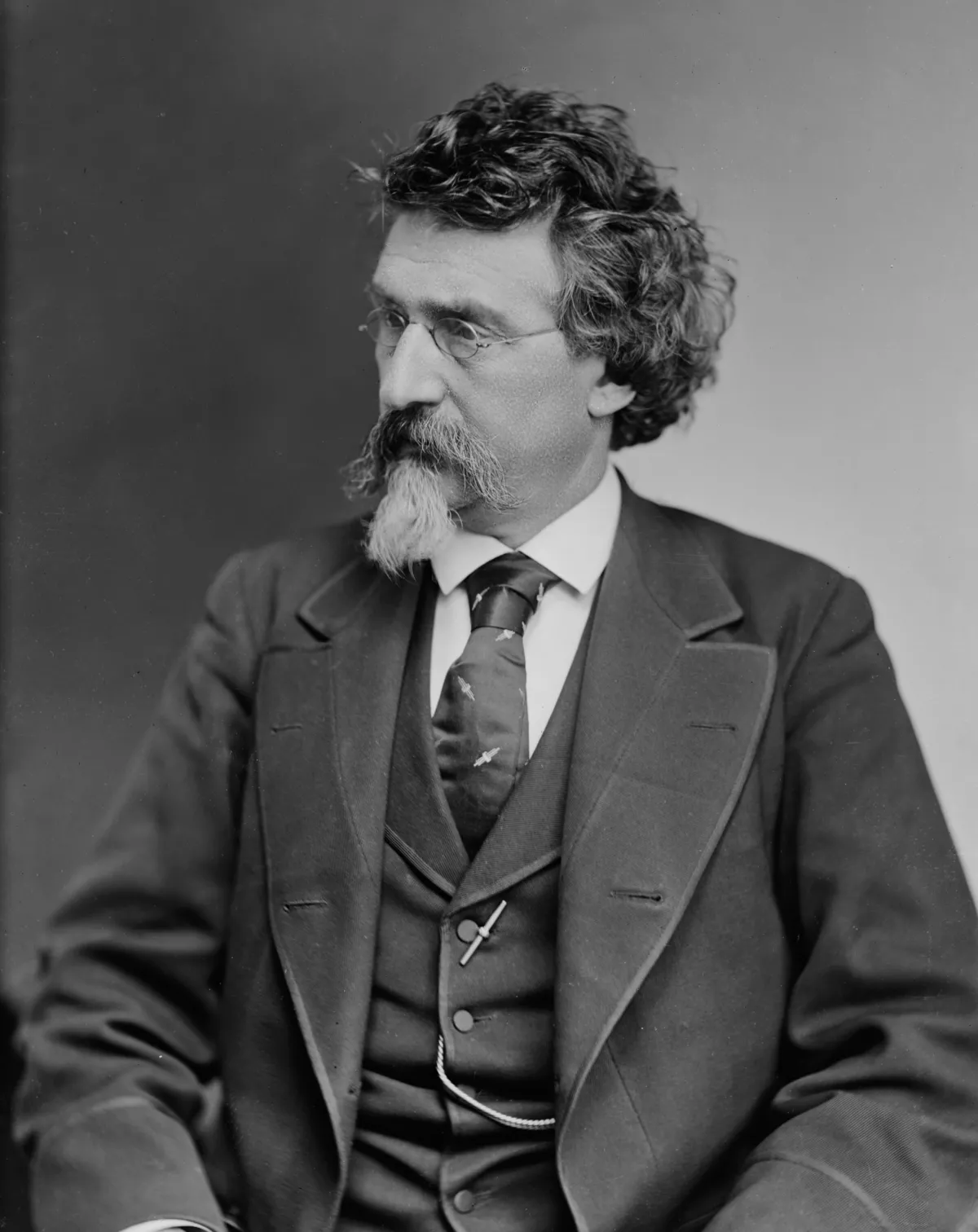 1.
1. Mathew Brady studied under inventor Samuel Morse, who pioneered the daguerreotype technique in America.

 1.
1. Mathew Brady studied under inventor Samuel Morse, who pioneered the daguerreotype technique in America.
Mathew Brady photographed generals and politicians on both sides of the conflict, though most of these were taken by his assistants rather than by Brady himself.
Mathew Brady was the youngest of three children to Irish immigrant parents, Andrew and Samantha Julia Brady.
At the age of 16, Mathew Brady moved to Saratoga, New York, where he met portrait painter William Page and became Page's student.
In 1839, the two traveled to Albany, and then to New York City, where Mathew Brady continued to study painting with Page and with Samuel Morse, Page's former teacher.
At first, Mathew Brady's involvement was limited to manufacturing leather cases that held daguerreotypes.
Morse opened a studio and offered classes; Mathew Brady was one of the first students.
In 1844, Mathew Brady opened his own photography studio at the corner of Broadway and Fulton Street in New York, and by 1845, he began to exhibit his portraits of famous Americans, including the likes of Senator Daniel Webster and writer Edgar Allan Poe.
In 1850, Mathew Brady produced The Gallery of Illustrious Americans, a portrait collection of prominent contemporary figures.
At first, the effect of the Civil War on Mathew Brady's business was a brisk increase in sales of cartes de visite to departing soldiers.
Mathew Brady first applied to an old friend, General Winfield Scott, for permission to have his photographers travel to the battle sites, and eventually he made his application to President Lincoln himself.
Mathew Brady employed Alexander Gardner, James Gardner, Timothy H O'Sullivan, William Pywell, George N Barnard, Thomas C Roche, and seventeen other men, each of whom was given a traveling darkroom, to go out and photograph scenes from the Civil War.
Mathew Brady generally resided in Washington, DC, where he organized his assistants and rarely visited battlefields personally.
Many of the images in Mathew Brady's collection are, in reality, thought to be the work of his assistants.
In October 1862, Mathew Brady opened an exhibition of photographs from the Battle of Antietam in his New York City gallery, titled The Dead of Antietam.
Mathew Brady was not able to photograph actual battle scenes, as the photographic equipment in those days was still in the infancy of its technical development and required that a subject be still for a clear photo to be produced.
Mathew Brady expected the US government to buy the photographs when the Civil War ended.
Unwilling to dwell on the gruesomeness of the Civil War after it ended, private collectors for Mathew Brady's works were scarce.
Mathew Brady's funeral was financed by veterans of the 7th New York Infantry, and he was buried in the Congressional Cemetery in Washington, DC.
Mathew Brady photographed 18 of the 19 American presidents from John Quincy Adams to William McKinley.
The exception was the ninth president, William Henry Harrison, who died in office three years before Mathew Brady started his photographic collection.
The thousands of photographs which Mathew Brady's photographers took have become the most important visual documentation of the Civil War, and have helped historians and the public better understand the era.
Mathew Brady photographed and made portraits of many senior Union officers in the war, including:.
Mathew Brady photographed Lord Lyons, the British ambassador to Washington during the Civil War.
Mathew Brady can be considered a pioneer in the orchestration of a "corporate credit line".
Such a "Mathew Brady stand" of the mid-19th century typically had a weighty cast iron base for stability, plus an adjustable-height single-column pipe leg for dual use as either a portrait model's armrest or as a neck rest.
The original namesake Brady was W Tate Brady, a prominent businessman in Tulsa's early history, who had connections to the Ku Klux Klan and other racist organizations.
In 1968 Mathew Brady became one of the first two Americans named to the International Photography Hall of Fame and Museum.
Mathew Brady's photographers created many of the Civil War images, most of which were in 3-D according to Zeller.
On September 19,1862, two days after the Battle of Antietam, the bloodiest day of combat on US soil with more than 23,000 killed, wounded or missing, Mathew Brady sent photographer Alexander Gardner and his assistant James Gibson to photograph the carnage.
In October 1862, Mathew Brady displayed the photos by Gardner at his New York gallery under the title "The Dead of Antietam".